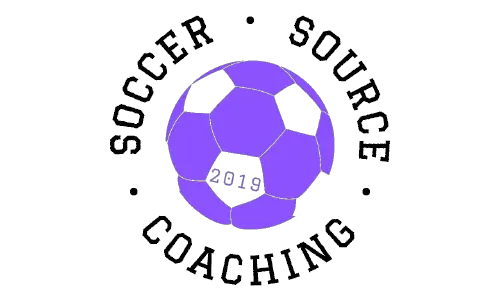Choosing a soccer formation shouldn’t be the most challenging part of coaching, however, it is a part of the game that some coaches dwell over for far too long! There are a variety of different factors that go into deciding a team’s formation. This can include the strengths and weaknesses of your team, the opposition’s tactics, and the current game situation. This post will give you the best soccer formation based on how you want to play the game!
These are the best soccer formations
These are the best soccer formations depending on how your team’s style of play:
- 3-4-3 (Best attacking soccer formation)
- 4-1-4-1 (Best defending soccer formation)
- 4-5-1 (Best counter-attacking soccer formation)
- 4-3-3 (Best pressing soccer formation)
- 4-2-3-1 (Best soccer formation for keeping possession)
- 4-4-2 (Best soccer formation for a weak team)
However, before implementing a formation you need to ensure that your players can fulfill the roles for it to succeed. I go into more detail on player roles for each of the best soccer formations below.
Best attacking soccer formation | 3-4-3
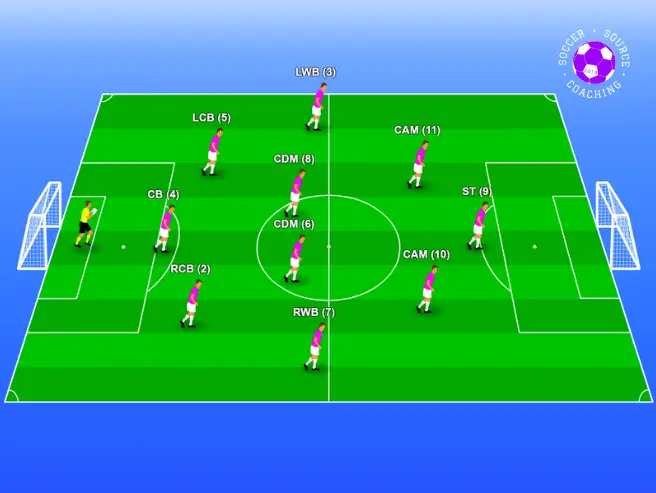
Click here for a full breakdown of the 3-4-3 soccer formation
This is why the 3-4-3 is the best-attacking soccer formation
The 3-4-3 is the best-attacking formation because of the number of overloads that can be created in wide areas and central areas.
In the 3-4-3 formation, the wingbacks will try to stay as wide as possible while attacking, with the striker finding space between the 2 center-backs.
This drags the opposition fullbacks as wide as possible while trying to keep the opposition center-backs as central as possible.
The purpose of this is to create a big space between the opposition fullback and center-back for the central attacking midfielders to attack.
There are also a variety of ways attackers in the 3-4-3 can exploit the space.
The wingbacks can also cut inside, to create space for the central attacking midfielders in the wide areas.
The striker can also come short allowing the central attacking midfielders to push on and make runs beyond the striker
The teams that the 3-4-3 formation works best against
The 3-4-3 works best against teams that play with a back 4.
This is because the front 3, combined with the wingbacks can really stretch the opposition’s back 4 to create more spaces to exploit.
It will also work well against weaker teams who are not confident on the ball, to keep them under constant pressure and really capitalize on your team’s attacking strength
Team requirements for the 3-4-3 formation to succeed
For the 3-4-3 soccer formation to succeed you will need the 3 central defenders to be able to play with the ball at their feet and bring the ball forward from the back.
As well as this they must hold the characteristics of a traditional center back.
They will also need to be more mobile and agile as they have to cover a larger area of the pitch.
The wingbacks in this formation need to work incredibly hard as they play a vital role in the success of how the team attacks and defends.
They need to be confident taking 1v1s against the opposition fullback as well as being able to successfully defend in a 1v1 too.
The main attacking threat in the 3-4-3 formation will come from central attacking midfielders exploiting the space between the opposition’s defensive line.
They need to be able to dribble with the ball at their feet, play defense-splitting passes and be able to take their chances in front of the goal.
Best defending soccer formation | 4-1-4-1
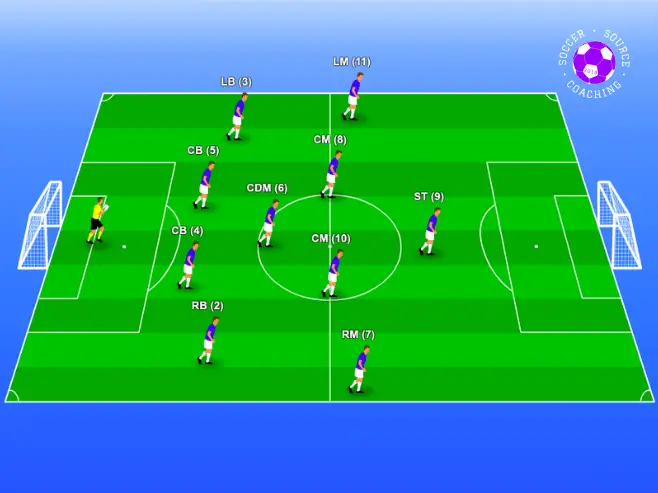
Click here for a full breakdown of the 4-1-4-1 soccer formation
This is why the 4-1-4-1 is the best defending soccer formation
The 4-1-4-1 is the best defensive formation because it is incredibly tough to break down, especially in a low block or midfield press.
This is because of the central defensive midfielder that sits between the midfield and defensive line.
They are occupying a space that opposition strikers or central attacking midfield like to drift into to receive the ball, making it very hard for teams to get in behind the midfield line.
In the 4-1-4-1 formation, there is also a central midfield of 3, which typically means they will have the player advantage when playing against a midfield 2, giving them the upper hand.
The left and right midfielders are also in great positions to track back and support their respective fullbacks.
The teams that the 4-1-4-1 formation works best against
The 4-1-4-1 formation will work best against teams that like to attack particularly in central areas of the pitch, as well as teams that lack creativity in the final third because of how the formation is set up.
Defensive midfielder players play a huge role in denying time, space, and options to opposition players who like to find space between the defensive lines.
This would also be a good formation to swap to if you are looking to see out the game to protect your lead.
Team requirements for the 4-1-4-1 formation to succeed
For the 4-1-4-1 to be successful the defensive midfielder position is vital to the team.
This is arguably the most crucial role in the team for the formation to work.
The defensive midfielder must look to always occupy and hold that space in the middle of the pitch.
They need to be a fantastic reader of the game and look to anticipate what is happening around them to breakdown play and prevent the opposition’s most influential attacking players from getting a foothold in the game
The team as a whole will always have to be on the page when defending and must maintain focus to keep their defensive shape and discipline.
The center-backs should be leading this as they are at the heart of the defense.
They should be communicating when to step, press, and shuffle to help shut the opposition out
Best counter-attacking soccer formation | 4-5-1
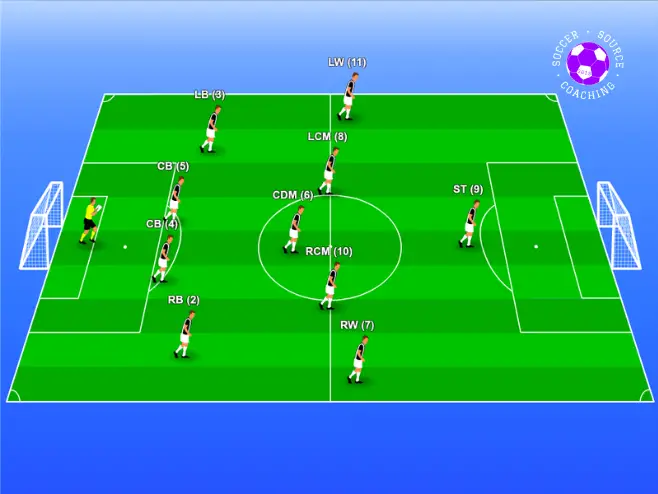
Click here for a full breakdown of the 4-5-1 soccer formation
This is why the 4-5-1 is the best counter-attacking soccer formation
This is the best counter-attacking formation because it draws the opponents in sitting back in a low block.
As the opposition team moves higher up the pitch a large amount of space is left behind them which can be exploited by a counter-attack.
The longer the game goes on without the opposition scoring, the more frustrated they become the more risks they will take going forward, which inevitably leads to more space behind.
The 4-5-1 is incredibly hard to break down as it has numerical defensive advantages across the pitch, and really packs out the midfield and wide areas to limit the amount of space the opposition has to operate.
The teams that the 4-5-1 soccer formation works best against
The 4-5-1 soccer formation works best against teams that like to try and dominate in possession of the ball and like to attack first with defense at the back of their mind.
The opposition team will likely be slow at transitioning too.
This formation would also be great to play against teams that have a slow defensive line when catching them on the counter-attack.
Team requirements for the 4-5-1 formation to succeed
For the 4-5-1 formation to succeed with your team you need to ensure that your players are disciplined and organized when holding their defensive shape because the team will go long periods of time without possession of the ball.
Players need to know when to press, and when to drop off as they could easily get picked off and drawn out of position which will make it easier for the opposition team to break down the low block.
If you are playing on the counter-attack you need to have players with pace to burn particularly in the wide areas and upfront.
Your team also needs to transition from defense to attack as quickly as possible.
These are some great counter-attacking soccer drills
Best high-pressing soccer formation | 4-3-3
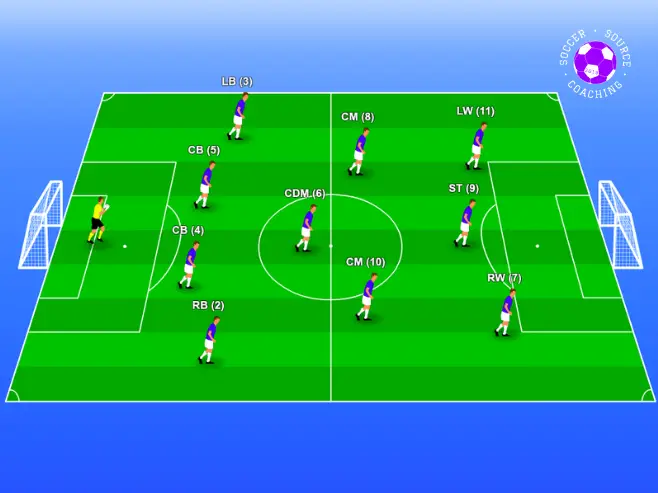
Click here for a full breakdown of the 4-3-3 formation
This is why the 4-3-3 is the best-pressing soccer formation
The 4-3-3 is the best soccer formation for pressing high because the front 3 can work together to trap opposition players on the ball and force them into mistakes.
This can result in the team winning possession of the ball in a really advantageous position, usually in the opposition’s team’s defensive third.
When the front 3 press the central midfielders and fullbacks can push further reducing the options for the opposition player on the ball.
The center defensive midfielder will drop back and help the center-backs tidy up if the opposition decides to play the ball long
The teams that the 4-3-3 formation works best against
The 4-3-3 formation will work well against teams that like to try and play out of the back and against teams with center backs and fullbacks who are not comfortable with the ball at their feet.
Team requirements for the formation to succeed
For the 4-3-3 to be a successful formation for your team you need a front 3 who are fast, aggressive, and will work incredibly hard for the team.
The front 3 will also have in sync when they press, all it takes is for 1 of them, not to press and their high press effectively becomes useless.
Here are the pressing triggers that players should be looking for so they know when to press.
The success of the formation will also come down to how well the team can transition from pressing to attacking when a change in possession occurs.
Players must quickly adjust and find space to support the player who is now on the ball.
Best soccer formation to keep possession | 4-2-3-1
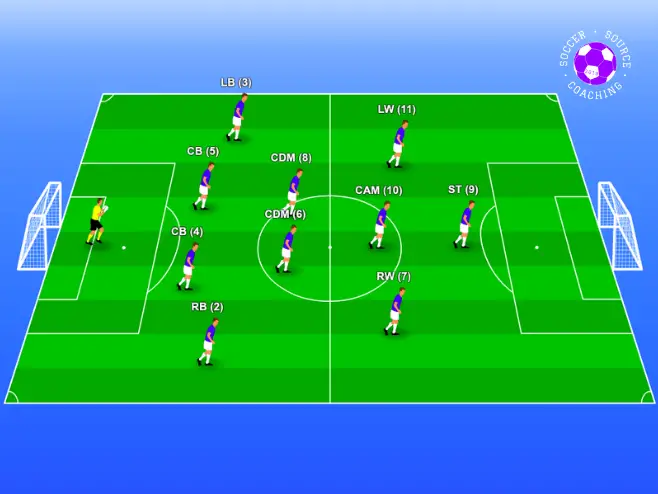
Click here for a full breakdown of the 4-2-3-1 formation
This is why the 4-2-3-1 is the best soccer formation to keep possession
The 4-2-3-1 is the best soccer formation to keep possession because of the amount of depth and passing lanes the formation creates.
There is a huge amount of passing combinations that can be made between the players across the entire pitch
For a team to successfully keep possession of the ball they must be constantly moving a finding space and angles to support the player on the ball
The 2 defensive midfielders will act as the team’s pivot and look to change the points of attack, but if they cannot go forward there are plenty of options to work the ball in better positions to go forward.
The teams that the 4-2-3-1 formation works best against
The 4-2-3-1 soccer formation will work best against teams that are happy to sit and drop back.
This will allow the team to easily keep possession of the ball and continue to try and change the point of attack to drag opposition players out of position.
The team can then exploit the space in the gaps where players have been dragged out.
Equally, this formation will work well against teams that like to try to press.
Pressing is incredibly draining and can be very frustrating when you are getting no success.
A team will struggle to press against a team that is very good at keeping possession of the ball
Team requirements for the 4-2-3-1 formation to succeed
For the 4-2-3-1 soccer formation to be a success for your team you need to have players that are comfortable with the ball at their feet and can pass and receive the ball on both feet too.
As well as this players need to be constantly scanning and checking their surroundings, this will help them:
- Find spaces to receive the ball
- Create angles to make it easier for teammates to play passes
- Make better passing decisions when they are on the ball
- know when to turn with the ball and play forward or play backward and keep the ball
The center-attacking midfielder is going to play a huge role in how the team can keep possession with a purpose.
The center-attacking midfielder in the team must be comfortable receiving the ball between the defensive and midfield lines and always be looking to play in the half-turn to set up goal-scoring opportunities
Best balanced soccer formation | 4-4-2
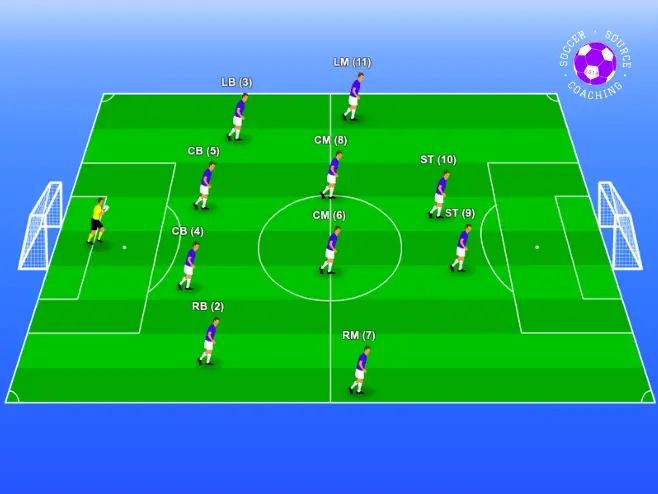
Click here for a full breakdown of the 4-4-2 soccer formation
This is why the 4-4-2 is the best-balanced soccer formation
The 4-4-2 is the best-balanced soccer formation because it allows the team to move forward with attacking intent while providing defensive security going back.
When attacking the strikers will go forward with the wingers and a central midfielder, allowing 5 players to attack.
Depending on the type of attack the fullbacks can push up too!
When defending the team can create 2 solid banks for 4 to force players to the outsides of the pitch, with the 2 strikers being able to press and close off passing angles.
The teams that the 4-4-2 formation works best against
The 4-4-2 formation, due to its balanced tactics, will be fairly effective against the majority of teams.
It will do particularly well against unorganized teams, because of the simple structure of the 4-4-2 formation.
This will also be a good formation to change to if you are trying to regain control of the game.
Team requirements for the formation to succeed
For the 4-4-2 to be as successful as possible it’s vital that the 2 central midfielders as prepared to work box-to-box to help create attacks and prevent opposition attacks.
Wingers in this formation will be more traditional in the fact they would try to go around the outside of the opposition fullback and deliver crosses into the box as early as possible.
In the striking pair, there will be one player who will play more of a target player role and look to hold the ball up while the other will look to run in behind the defense.
Best soccer formations | Conclusion
These are the best soccer formations in my opinion for each style of team play.
Some of these formations may have more tactical uses than the one listed, but it is all about finding the best soccer formation that works best for your team!
Sometimes you will need to adapt your formation depending on the game situation too.
For example, if you are looking to push on and score a goal you may want to implement a more attacking formation such as a 3-4-3 or 4-3-3.
A team may want to switch to a more defensive formation such as a 4-5-1 or 4-1-4-1 if they want to protect their lead or try to keep the score the same.
If you coach a variety of youth teams then here are examples of the different youth soccer positions
If you know a coach that would find this post helpful then please share it with them using the social media buttons.
Thank you for reading and sharing,
Toby
